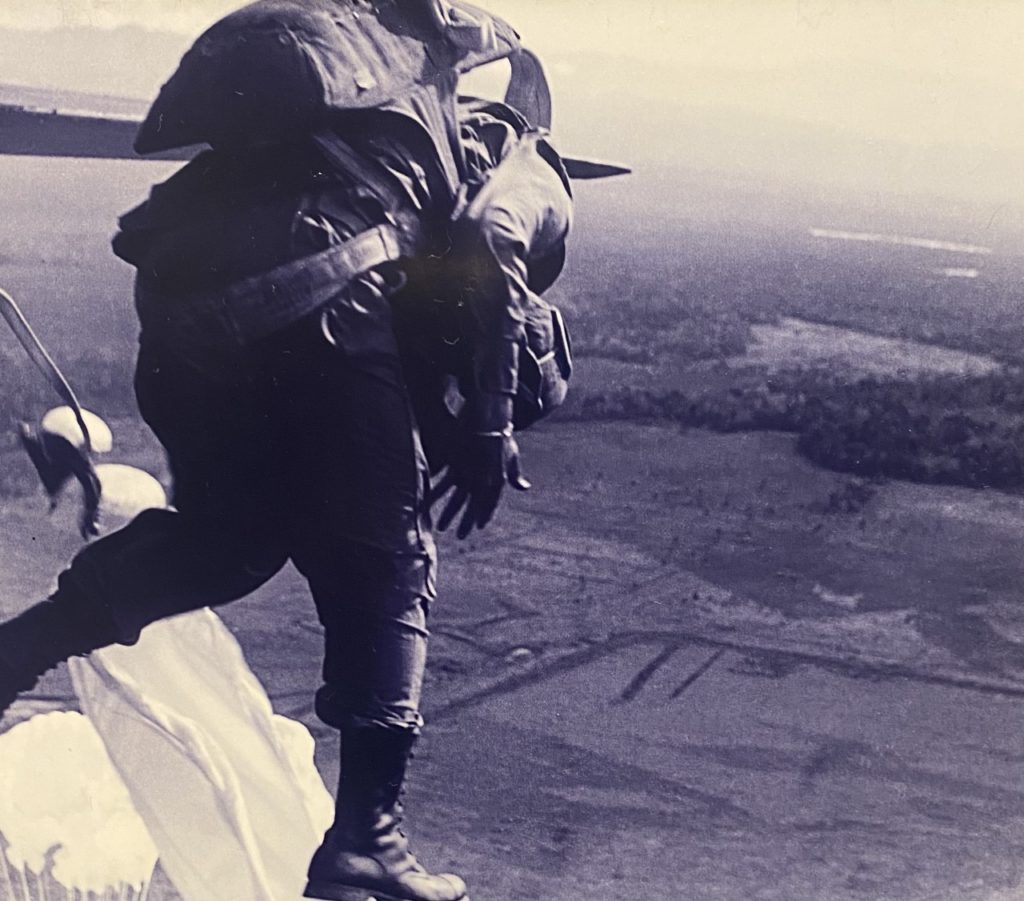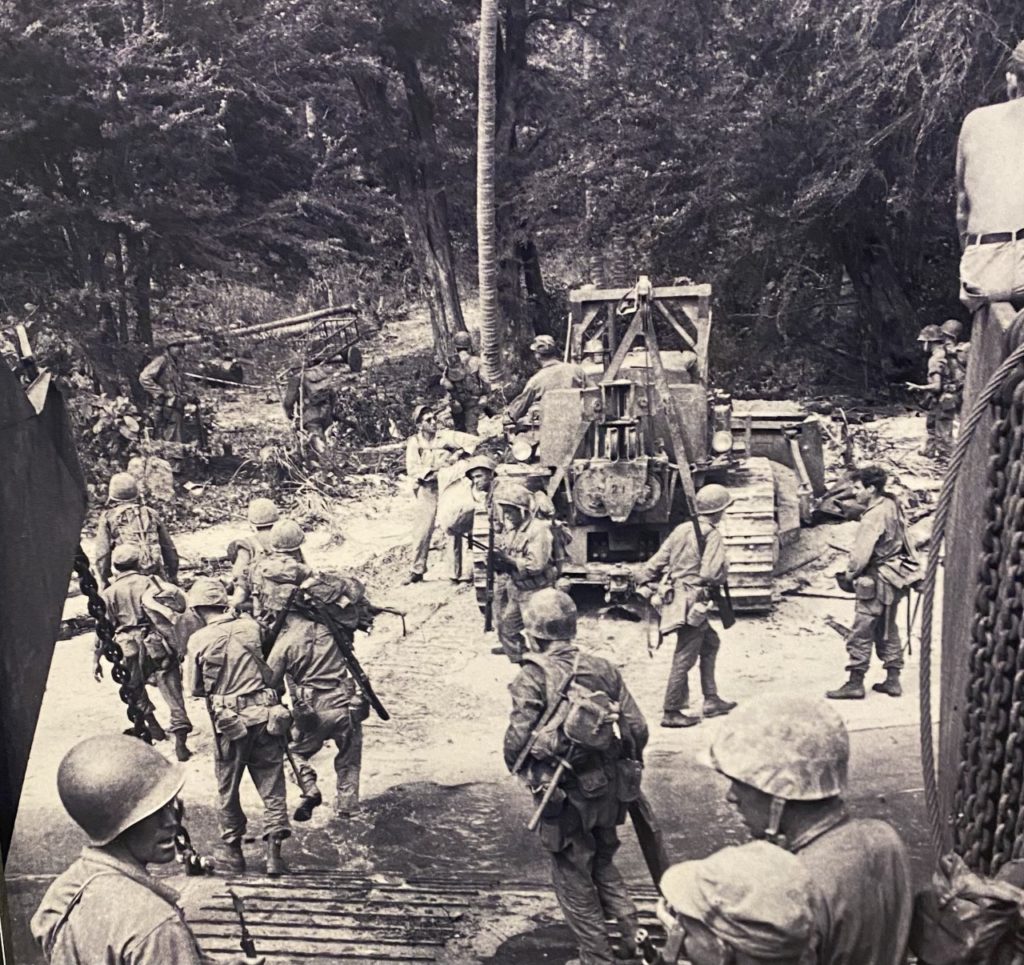Counterattack in the Pacific: Action in New Guinea and the Philippines
American parachute forces in the Pacific Theater of Operations were first used in New Guinea where the Allies mounted a major counteroffensive to stop the Japanese advance on Australia. On September 5th, 1943, the 503rd Parachute Infantry Regiment completely surprised the Japanese by dropping the 1,700 troopers on the enemy airfield at Nadzab. Following the 82nd Airborne Division’s jump into Sicily, Nadzab had none of the problems of that operation, and Army planners fully acknowledged the usefulness of airborne assaults.
The 503rd jumped again on July 3rd and 4th, 1944 at Noemfoor Island in New Guinea as an airborne reinforcement, helping to defend the Kamiri airstrip against Japanese counterattacks. After that operation, the 503rd moved to the Philippine Islands where, on February 16th, 1945, the regiment made its celebrated jump onto Corregidor Island in Manilla Bay. The battle of “The Rock” was legendary, with Colonel George Jones’ 503rd Regimental Combat Team pitted against over 5,000 Japanese defenders.

Joining the 503rd in the fight for the Philippines, Major General Joe Swing’s 11th Airborne Division distinguished itself through assault jumps and seaborne landings. Swing’s troopers jumped at Tagaytay, Luzon, on February 3rd, 1945, seized the prison camp at Los Banos, Luzon, on February 23rd, 1945 and made a parachute and glider assault at Aparri, Luzon on June 23rd, 1945. After the Japanese surrender, the 11th headed to Japan as an occupying force.

Special Operations Forces also played a part in the Philippines. In January 1945, the Alamo Scouts of the U.S. Sixth Army assisted the 6th Ranger Battalion in the dramatic seizure of the Cabanatuan prisoner of war camp. As with the Airborne operations, surprise, courage and fighting skills rapidly defeated the Japanese.
Did you enjoy this content? If so, please consider giving a gift to the ASOM today to help us continue our mission of educating the public on the legacies of Airborne and Special Operations Soldiers.



